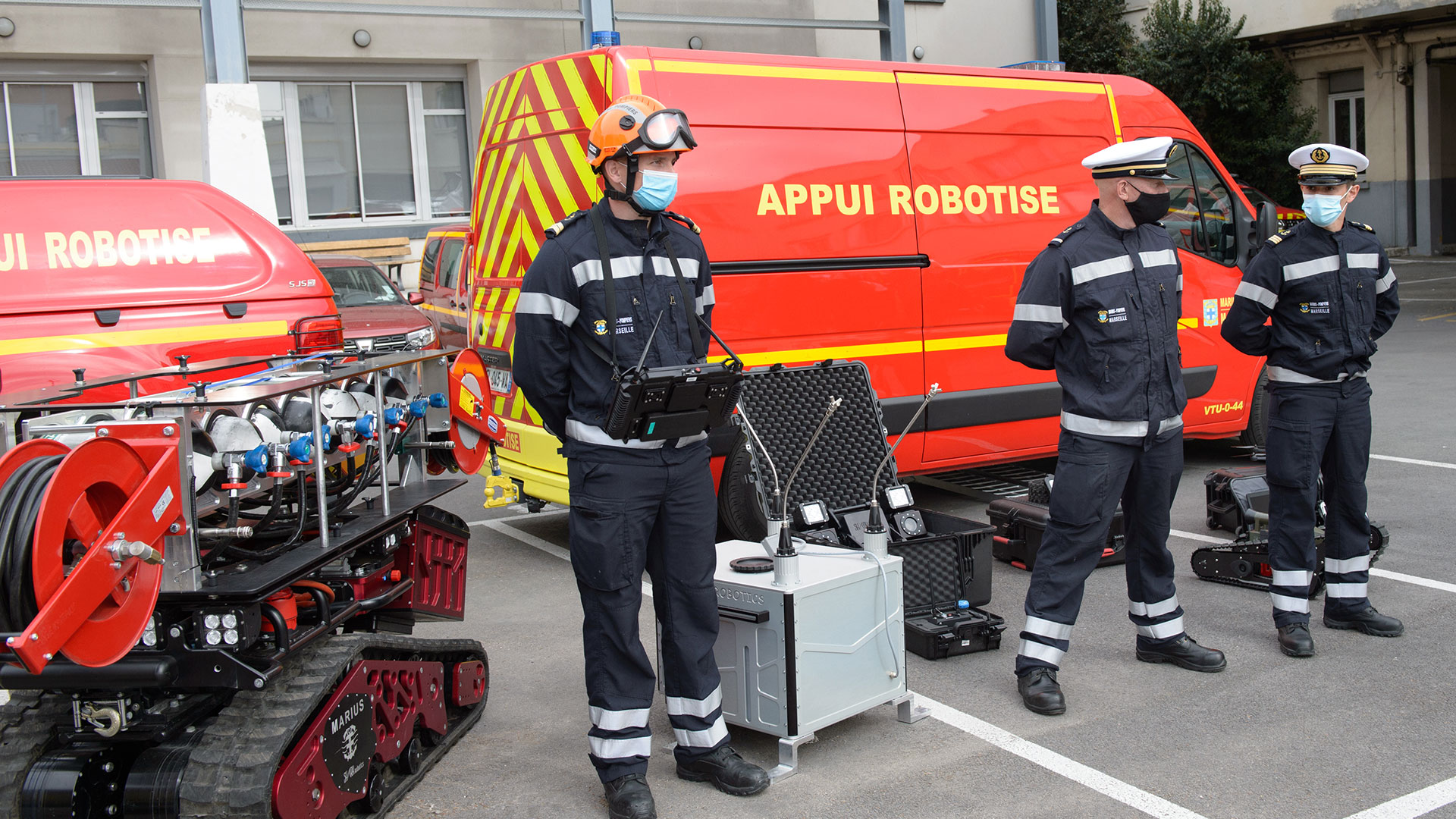
Firefighting remains one of the world’s most dangerous professions, constantly asking fire service personnel to enter high-risk environments to save lives and protect property. Despite their immense bravery and rigorous training, some scenarios are simply too dangerous to reasonably expect human firefighters to tackle up close.
Fortunately, advances in robotics and drone technology are revolutionising how fires are managed, and rescue operations are assessed, planned and undertaken. Increasingly regular deployments of machine-based colleagues are saving the lives of firefighters and civilians as previously unmanageable fires now fall within the scope of survivability.
Around the world, robots and drones are being deployed to handle fires in hazardous conditions, assist in search-and-rescue missions, and gather crucial data for ongoing fire management strategies.
Exemplary deployments from around the world
Colossus (France)
Designed by the French company Shark Robotics, Colossus is a remote-controlled robot equipped with high-powered water cannons, thermal cameras, and sensors that help it operate in extreme heat and smoke-filled environments. With a rugged design, the robot can move across difficult terrain and even carry heavy equipment.
During the Notre-Dame fire, Colossus played a vital role in protecting firefighters by entering the cathedral and directing water to areas too dangerous for human responders. This innovation demonstrates how robots can complement traditional firefighting efforts in historic and structurally sensitive locations.
Thermite RS3 (United States)
The Thermite RS3 is one of the most advanced firefighting robots currently in use across the US. Extensively deployed by the Los Angeles Fire Department (LAFD), it saw action as recently as March 10th 2025 in a major commercial building fire, and proved instrumental in supporting firefighting efforts in the January 2025 wildfires that erupted across Los Angeles.
Equipped with a water cannon capable of spraying 2,500 gallons per minute, Thermite RS3 is best suited for suppressing major industrial blazes and wildfires. The robot is remotely operated and can navigate debris-covered terrain, making it ideal for dangerous environments such as burning warehouses, chemical plants, and tunnels.
THeMIS UGV (UAE)
Originally a military vehicle secured in a $200 million deal with designer Milrem last year, THeMIS has been adapted in this case for emergency response work in the UAE. It utilises foam cannons and high-pressure hoses to overcome a wide range of fire scenarios, excelling at operating in challenging terrain such as damaged or collapsed buildings and tunnels.
Given that the UAE experiences extreme temperatures and has a history of industrial fire risks, its firefighting forces have integrated THeMIS into its emergency response systems to handle oil refinery fires, high-rise blazes, and desert wildfires.
LUF 60 (Austria)
Tunnel-based fires are among the most challenging scenarios imaginable, and Austria has introduced the LUF 60 robot specifically with this in mind. It is equipped with a high-powered fan that can spray mist and foam to cool down fires quickly in targeted areas, preventing unmanageable buildups. One of its key advantages is its ability to still operate effectively even in thick smoke and extreme temperatures, conditions that would be hazardous or lethal to human firefighters.
LUF 60s were incorporated into the Abu Dhabi Civil Defence force in 2019 and remain an essential response unit for tunnel fires throughout the emirate.
DJI Matrice 300 RTK (China)
Drones continue to burnish their reputation as an essential tool for wildfire and urban firefighting, and the DJI Matrice 300 RTK is among the most advanced. Used extensively in China but also in Europe and North America, this drone comes with thermal imaging cameras, real-time data transmission, and AI-driven object detection to assist firefighting teams.
Fire teams use this drone to map wildfires more efficiently, locate trapped individuals, and monitor fire progression in real time, allowing for a more tactically coordinated response. With 6-directional obstacle sensing and extended flight time, the drone provides critical situational awareness in large-scale fires, reducing the reliance on helicopters and ground teams for reconnaissance missions.
Firefighting technology is already saving lives
The firefighting industry is undergoing a transformation, as robots and drones are unlocking significant improvements in efficiency, effectiveness and, above all, safety. Not only are they able to directly tackle situations deemed too dangerous for humans, their ability to provide real-time situational data is also constantly driving better decision-making and subsequent strategic refinements in the fire departments that use them. Future developments in AI, automation, and autonomous firefighting swarms will enhance these capabilities even further.
Before the end of the decade, autonomous drone fleets may be able to create real-time wildfire maps and deliver fire retardants before traditional teams arrive. Additionally, AI-driven fire prediction models integrated with robotics will help prevent fires from spreading in urban areas and forests.